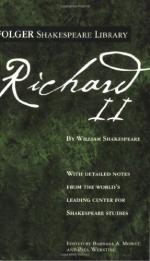|
This section contains 14,554 words (approx. 49 pages at 300 words per page) |

|
SOURCE: Barroll, Leeds. “A New History for Shakespeare and His Time.” Shakespeare Quarterly 39, no. 4 (winter 1988): 441-64.
In the following essay, Barroll investigates the relationship between the Earl of Essex rebellion and Richard II.
History must be detached from the image that satisfied it for so long, and through which it found its anthropological justification: that of an age-old collective consciousness that made use of material documents to refresh its memory; history is the work expended on material documentation (books, texts, accounts, registers, acts, buildings, institutions, laws, techniques, objects, customs, etc.) that exists, in every time and place, in every society, either in a spontaneous or in a consciously organized form. The document is not the fortunate tool of a history that is primarily and fundamentally memory; history is one way in which a society recognizes and develops a mass of documentation with which it is inextricably linked.
Michel...
|
This section contains 14,554 words (approx. 49 pages at 300 words per page) |

|


